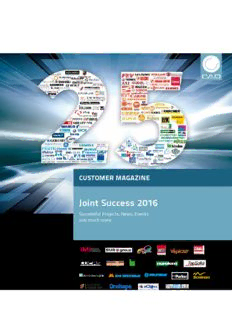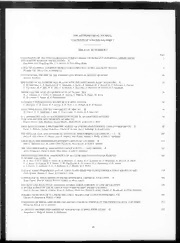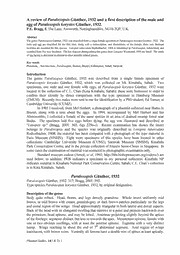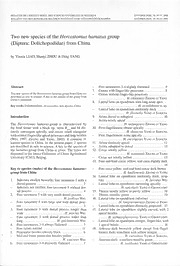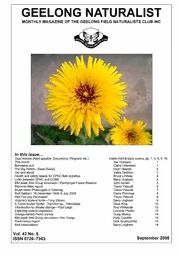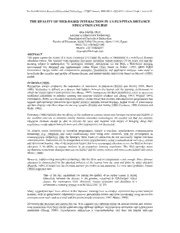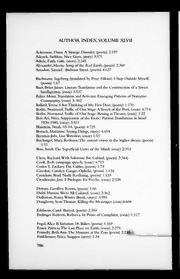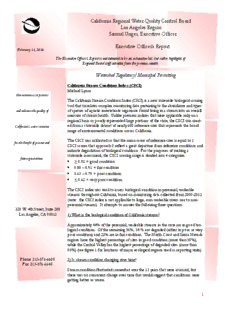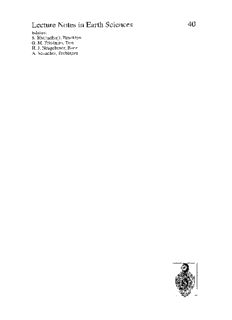
Preview Regional geology of Africa
Lecture Notes in Earth Sciences 40 Editors: S. Bhattacharji, Brooklyn G. M. Friedman, Troy H. J. Neugebauer, Bonn A. Seilacher, Tuebingen Sunday .W Petters lanoigeR Geology of acirfA galreV-regnirpS Berlin Heidelberg NewYork London Paris Tokyo Kong Hong Barcelona Budapest Author Sunday W. Petters Department of Geology University of Calabar Calabar, Nigeria "For all Lecture Notes in Earth Sciences published till now please see final page of the book" ISBN 3-540-54528-X Springer-Verlag Berlin Heidelberg New York ISBN 0-387-54528-X Springer-Verlag New York Berlin Heidelberg This work is subject to copyright. All rights are reserved, whether the whole or part of the material is concerned, specifically the rights of translation, reprinting, re-use of illustrations, recitation, broadcasting, reproduction on microfilms or in any other way, and storage in data banks. Duplication of this publication or parts thereof is permitted only under the provisions of the German Copyright Law of September 9, 1965, in its current version, and permission for use must always be obtained from Springer-Verlag. Violations are liable for prosecution under the German Copyright Law. @ Springer-Verlag Berlin Heidelberg 1991 Printed in Germany Typesetting: Camera ready by author Printing and binding: Druckhaus Beltz, Hemsbach/Bergstr. 32/3140-543210 - Printed on acid-free paper Dedicated to: Wissenschaftskolleg zu Berlin - Institute for Advanced Study - Preface This book represents the first attempt in three decades to marshall out available information on the regional geology of Africa for advanced un- dergraduates and beginning graduate students. Geologic education in African universities is severely hampered by the lack of a textbook on African regional geology. This situation is greatly exacerbated by the inability of most African universities to purchase reference books and maintain journal subscriptions. Besides, geologic information about Africa is so widely dispersed that a balanced and comprehensive course content on Africa is beyond the routine preparation of lecture notes by university teachers. Since geology is a universal subject and Africa is one of the largest landmasses on Earth with one of the longest continuous records of Earth history, there is no doubt that geologic education in other parts of the world will benefit from a comprehensive presentation of African geologic case histories. The scope of this text also addresses the need of the professional geologist, who may require some general or background information about an unfamiliar African geologic region or age interval. Africa occupies a central position in the world's mineral raw materi- als trade. Because of its enormous extent and great geologic age, the di- versity and size of Africa's mineral endowment is unparalleled. Africa is the leading source of gold, diamond, uranium, and dominates the world's supply of strategic minerals such as chromium, manganese, cobalt, and platinum. Consequently, African nations from Algeria to Zimbabwe depend solely on mineral exports for economic survival. The geologic factors which govern economic mineral deposits are stressed in this text. The geological history of Africa spans 3.8 billion years, a record that is unique both in duration and continuity. Few other parts of our planet match the plethora of geologic phenomena and processes that are displayed in the African continent. From the various stages of crustal evolution decipherable from the Archean of southern Africa, through the plate tectonics scenarios in the ubiquitous Late Proterozoic-Early Paleo- zoic Pan-African mobile belts and in the Hercynian and Alpine orogenies of northwest Africa, to the East African Rift Valley, Africa is replete with excellent examples and problems for a course on regional tectonics. Teachers of igneous and metamorphic petrology can hardly ignore Africa's anorogenic magmatism (e.g.. layered ultramafic intrusives such as the Great Dyke and the Bushveld Complex; the Tete gabbro-anorthosite pluton; alkaline complexes; basaltic volcanism), or tantalizing high- IIIV grade metamorphic terranes such as the Limpopo belt, the Namaqua mobile belt, and the Mozambique belt. From the extensive Precambrian supracrustal sequences throughout the continent with enormous thicknesses of sedimentary rocks that have hardly been deformed or metamorphosed, to the stratigraphic evolution of Africa's present-day passive continental margin, there is a complete spectrum of facies models upon which to base a course on basin analysis and stratigraphy. To maintain its integrity a course on historical geology anywhere in the world must address the theory of Continental Drift beyond invoking past continuities between West Africa and South America. Past connections between West Africa and eastern North America must equally be explored, so also connections between northeast Africa and Arabia, and the paleo- geography of southern Gondwana where Africa occupied centre stage. The Precambrian fossil record, the transitions from reptiles to the earliest mammals and dinosaurs, and the evolution of Man are among Africa's unique contributions to the history of life and the story of organic evolution. Although it lies today in the tropics Africa was the theatre of the Earth's most-spectacular glaciations. Even after the scene of continental glaciation had shifted to the northern continents only lately during the Pleistocene, Africa still witnessed spectacular climatic fluctuations during the Quaternary. Certainly students of archeology and paleoanthro- pology cannot overlook the Quaternary paleoenvironmental record of the Olduvai Gorge in Tanzania, the Lake Turkana basin in Kenya, the Nile val- ley, the Sahara, and southern Africa. But since African examples have already been cited in standard geo- logic textbook, I have often been asked why it has become necessary to revive the idea of a full-length textbook on African geology, 30 years after this idea was abandoned by the geologic community. My simple an- swer, as already stated, is that the wealth of available geologic infor- mation about Africa is so enormous and fascinating, but so diffuse, that an attempt must be made to assemble and pass on this knowledge. Berlin, May 1991 Sunday W. Petters Acknowl edgemen ts I would like to acknowledge the unique opportunity afforded me by two German institutions to write this text. This text was prepared during eleven months of residence at the Wissenschaftskolleg zu Berlin (Institute for Advanced Study Berlin). I thank this institution for fel- lowship support, and excellent bibliographic and secretarial assistance through which I enjoyed limitless access to geologic literature on Africa, and equally important, had the manuscript typed. Secondly, I wish to thank Prof. Dr. Eberhard Klitzsch of the Technical University Berlin who is the project leader of Special Research Project "Geoscientific Problems in Arid and Semiarid Areas" (Sonderforschungsbereich 69) funded by the German Research Foundation (DFG). Special Project 69 is devoted to geoscientific research in northeast Africa (Egypt, Sudan, Somalia, Ethiopia) and has graduate students from various parts of Africa. My visit to the Wissenschaftskolleg was through the recommendation of Pro- fessor Klitzsch. During the preparation of the manuscript I benefited enormously from discussions with and suggestions from the geologists in Special Project 69. The idea of writing a textbook on the regional geology of Africa was conceived during my 15 years of teaching various geology courses at five Nigerian universities. During this period I sought to enrich my course contents by visiting several European libraries and museums. In this res- pect I wish to thank Dr. M.C. Daly and his wife and Dr. C.S. Orereke for their hospitality during my visit to the University of Leeds in 1984. Dr. M. Oden was my host in London that year during my visit to the British Museum of Natural History, the Geological Museum, and the Imperial Col- lege library. I thank Prof. P. Bowden and Dr. J.A. Kinnaird for their hospitality during the colloquium on African geology at St. Andrews Uni- versity in 1985. Professor H.P. Luterbacher was very helpful during my visit to the University of T~bingen in 1987. I am generally greatly indebted to all geologists who have worked in Africa, from whose publications I have drawn the material for this text. I would also like to thank especially all those who sent very important books, reprints, and pre-prints of their publications on Africa. These include Profs. J.B Wright, S.J. Culver, R. Caby, B.-D. Erdtmann, L.B. Halstead, V. Jacobshagen, J.A. Peterson, P. Wilde, C.O. Ofoegbu, J.D. Fairhead, I. Valeton, J.R. Vail, and N.J. Jackson. Professors E. Buffetaut and L.L. Jacobs supplied illustrations of African verte- brates. I am greatly indebted to Prof. Rushdi Said who was also in residence at the Wissenschaftskolleg during the 1989/90 session. Professor Said's constant advice and encouragement kept up my spirits. I thank Profs. R.K. Olsson, R.C. Murray and B.W. Andah for encouraging me to pursue this pro- ject over the years. I am very grateful to Drs. M.C. Daly and G. Matheis who read through the Precambrian chapters and offered very useful suggestions. I als0 thank Drs. S. Muhongo and H. Schandelmeier for their comments on some of the Precambrian chapters. Dr. Muhongo greatly improved my coverage of East Africa. Professor N. Rutter kindly reviewed the Quaternary chapter. My special thanks go to Ms R. Plaar for the preparation of the manuscript, and all the secretarial staff of the Institute for their invaluable help. Special appreciation goes to Mrs Maria A. Gowans and Ms Linda O'Riordan who prepared the final camera-ready manuscript, for their patience and hard work. I would also like to acknowledge Mr Reinhard Prasser, who, in addition to his great hospitality, served at the final moment as the liaison with the publisher. Excellent bibliographic assistance was provided by Mrs Gesine Bottomley and her staff at the Wissenschaftskolleg and by Mrs Evelyn Kubig of the Geology Library of the Technical University, Berlin. Messrs Umo Harrison, E. Umo, Joe Sams, and Richard Ingwe and his colleagues rendered cartographic assistance. I thank Professor Charles Effiong, Vice-Chancellor of the University of Calabar for moral and material support. Dr. Alfred Koch, chairman and managing director of Mobil Producing Nigeria and Mr. Wande Sawyerr, ex- ploration manager of Mobil, also encouraged this project. Finally, on behalf of my wife Janet, and my children, Mfon, Emem, Ekanga and Unwana, who were with me in Berlin, I wish to express profound gratitude to the Rektor of the Wissenschaftskolleg, Prof. Dr. Wolf Lepe- nies and his wife for their hospitality. All the staff of the Wis- senschaftskolleg were very friendly to us, and for this we are very grateful. TABLE OF CONTENTS CHAPTER 1 INTRODUCTION i.i The Physical Setting of Africa 1.2 Geological History and Mineral Deposits of Africa CHAPTER 2 THE PRECAMBRIAN OF AFRICA: AN INTRODUCTION 2.1 Tectonic Framework 8 2.2 The Precambrian Time-Scale 13 2.3 Orogenic Cycles in Africa 16 2.4 Dominant Rock Types 19 C~PTER 3 THE ARCHEAN 3.1 Introduction 21 3.2 Kalahari Craton 23 3.2.1 Kaapvaal Province 25 Ancient Gneiss Complex 26 The Barberton Greenstone Belt 28 Structure of the Barberton Greenstone Belt 38 Granitoid Emplacement and Cratonization 39 Other Greenstone Belts in the Kaapvaal Province 41 3.2.2 Pongola Basin 42 3.2.3 .Zimbabwe Province 44 Gwenoro Dam Basement Gneisses 45 Older Greenstone Belt (Sebakwian Group) 47 Bulawayan Greenstones 48 Structure of the Bulawayan Greenstone 54 Igneous Intrusion and Cratonization 54 3.2.4 Limpopo Province 56 Northern Marginal Zone (N.M.Z.) 56 Central Zone in the Limpopo Valley 57 Central Zone in Botswana 58 Southern Marginal Zone (S.M.Z.) 59 Tectonic Models 60 3.2.5 Archean Mineralization on the Kalahari Craton 64 Gold 65 Chrome 68 Massive Base-Metal Sulphides 68 Iron Ore 69 Pegmatite Mineralization 69 Corundum 69 Asbestos 7O IIX 3.3 Zaire Craton 17 3.3.1 Kasai-NE Angola Shield 72 3.3.2 NW Zaire Craton 74 3.3.3 NE Zaire Craton 76 Bomu Gneiss Complex 77 West Nile Gneissic Complex 79 Ganguan Greenstone and Schist Belt 80 Kibalian Greenstone Belts 81 Granitoids 82 Gold Mineralization 83 3 4 Tanzania Craton 84 34.1 Geologic Framework 84 34.2 Dodoma Schist Belt 86 34.3 Nyanzian-Kavirondian Schist Belts 86 3 4.4 Gold Mineralization on the Tanzania Craton 87 3 5 West African Craton 90 35.1 Guinea Rise 90 Granitic Gneiss Basement 91 Greenstone Belts 92 3.5.2 Archean Mineralization on the Guinea Rise 98 3.5.3 Reguibat Shield 99 3.6 Other Archean Terranes in Africa 102 3.6.1 East Saharan Craton 102 Jebel Uweinat 102 Tuareg Shield 104 3.6.2 Madagascar 105 3.7 Archean Tectonic Models 105 3.7.1 Classical Models 105 3.7.2 Back-arc-Marginal Basin Models 107 3.7.3 Archean Plate Tectonics 107 CHAPTER 4 EARLY PROTEROZOIC CRATONIC BASINS AND MOBILE BELTS 4.1 Introduction 113 4.2 Kalahari Cratonic Basins 115 4.2.1 Introduction 115 4.2.2 Witwatersrand Basin 119 Stratigraphy 121 Mineralization 124 4.2.3 Ventersdorp Basin 126 4.2.4 Transvaal-Griqualand West Basins 127 Stratigraphy 127
Description:The list of books you might like

Can’t Hurt Me: Master Your Mind and Defy the Odds

Atomic Habits James Clear

The 48 Laws of Power

The 5 Second Rule: Transform your Life, Work, and Confidence with Everyday Courage
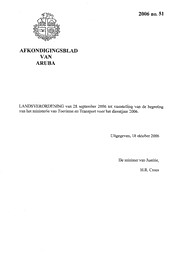
Afkondigingsblad van Aruba 2006 no. 51
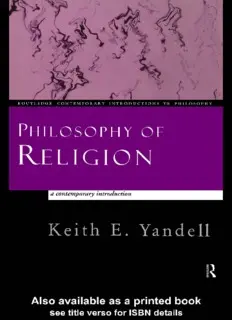
PHILOSOPHY OF RELIGION
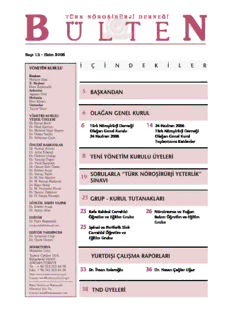
Bülten No 13 - Ekim 2006

Building to Impact: The 5D Implementation Playbook for Educators

Marxism and Totality
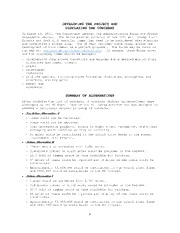
Three Creeks timber sale project final environmental impact statement

The Legend of the siete infantes de Lara : Refundición toledana de la crónica de 1344 version
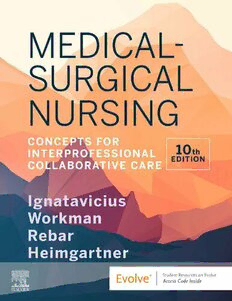
Medical-Surgical Nursing: Concepts for Interprofessional Collaborative Care

Greek Government Gazette: Part 2, 2006 no. 1893
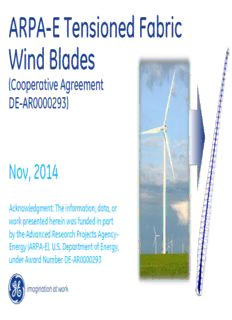
ARPA-E Tensioned Fabric Wind Blades
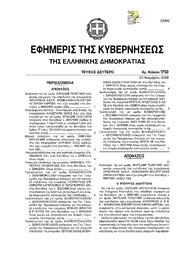
Greek Government Gazette: Part 2, 2006 no. 1750
